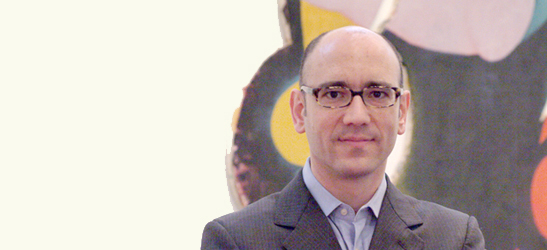Cercar
Per buscar una coincidència exacta, escriu la paraula o frase que vulguis entre cometes.
A A*DESK portem des del 2002 oferint continguts en crítica i art contemporani. A*DESK s’ha consolidat gràcies a tots els que heu cregut en el projecte; tots els que ens heu seguit, llegit, discutit, participat i col·laborat.
A A*DESK hi col·laboren i han col·laborat moltes persones, amb esforç i coneixement, creient en el projecte per fer-lo créixer internacionalment. També des d’A*DESK hem generat treball per quasi un centenar de professionals de la cultura, des de petites col·laboracions en crítiques o classes fins a col·laboracions més perllongades i intenses.
A A*DESK creiem en la necessitat d’un accés lliure i universal a la cultura i al coneixement. I volem seguir sent independents i obrir-nos a més idees i opinions. Si també creus en A*DESK, seguim necessitant-te per a poder seguir endavant. Ara pots participar del projecte i recolzar-lo.
The cultural effectiveness of a practice is a function of the degree of freedom that people pursuing that practice enjoy in a specific socio-economic and historical context. I have always been of the opinion that curatorial practice today, because of its very interstitial and unstable nature, possesses at least the same potential in terms of its effects in the cultural field that artistic practice used to have—and maybe more.
Having said that, it would be difficult to pin down the term “curatorial practice” under a clear-cut and distinct definition. There are museum curators and independent curators; there are people who become curators on occasion just to put together a specific exhibition; and there are tons of people who will never think of themselves as curators but at some point or another operate like them. In fact, most people who call themselves curators are so confined by a narrow system of conventions, that they end up enjoying almost no freedom in the large scheme of things and, in cultural terms, are completely ineffective.
The curatorial practice today possesses at least the same potential in terms of its effects in the cultural field that artistic practice used to have.
In contrast to museum curators, independent curators constantly run the risk of going too fast, dissolving the very possibility of their thinking in endless airport runaways and airline ticket counters
Circumscribed by conventions, they end up being the very embodiment of those conventions: distracted authors of boredom, of an academic or commercial nature (funny that those two apparent opposite extremes of bourgeois life are becoming more and more like each other), they just simply do what they are supposed to. In contrast to museum curators, who are usually slow, independent curators constantly run the risk of going too fast, dissolving the very possibility of their thinking in endless airport runaways and airline ticket counters. On one end of the spectrum the bureaucratic desk, on the other the volatility of thin air. Finally, the “occasional curator,” though sometimes extremely incisive, is also limited by the ephemerality of her interventions: any statement needs a certain degree of repetition in order to become apparent.
The obvious conclusion is that the curator as a cultural agitator, and a thinker in and of history and space, is less a reality than something we wish for, something that might happen at some point. But that is not entirely correct: it happens, now, and it also has happened, in the past. Curatorial practice as a cultural proposition is here to stay, but the curator as a subject shaped by and shaping that kind of practice is still largely absent. And this mainly because the current institutional arrangement still doesn’t have a place for her, too embedded as it is in old definitions of art and its role in the life of society. Then, it is our job not only to eventually become those curators, but also to create the fluid institutional framework where such curators could operate. An everchanging structure—challenging and challenged—that will require their presence in order to exist.
El texto fue escrito originalmente para formar parte del libro “Curatorial Wisdom”
publicado por Independent Curators International .
Carlos Basualdo es comisario de exposiciones.

"A desk is a dangerous place from which to watch the world" (John Le Carré)